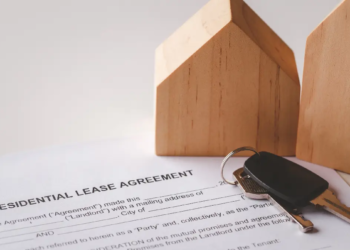The main objective of home insurance is to deal with an insurance claim should your property face an unexpected accident; however, a policy only has value when the underwriter respects your claims. Some insurers are better than others in paying claims, but many people face challenges when dealing with insurance providers.
Do not forget, the fewer insurance claims an insurance company pays, the more profitable it is, so insurers try to strike a balance between paying and denying claims.
Today, InsurEye, an online platform helping Canadians get cheap car insurance and offering access to numerous home, life and critical illness insurance tips shares insights from its consumer review platform based on stories that are shared by Canadians.
Enjoying our content? Subscribe to our free weekly newsletter to get real estate market insights, news, and reports straight to your inbox.
Incompetent and unprofessional adjusters
There are two different issues you can face with your claims adjustor: bad working ethics and professional incompetency/negligence.
- Poor work ethics include not answering /returning calls, procrastinating with the claim process, going on vacation without any communication to the customer, or simply being rude.
- On the professional incompetency/negligence side, adjusters can lowball you on claim value or take the wrong course of action (e.g. dispatching wrong contractors teams, making mistakes when assessing a situation). One example, out of the many reported on the InsurEye review platform, happened when the homeowners were asked to move back into their home despite the unfixed damages and extensive mold growth.
How to handle this situation: Do not let things get off track by letting adjusters spend months without returning calls. At the beginning of the process, check to see if your adjuster responds to questions within a reasonable timeframe, has correctly assessed the situation, is polite, etc. Remember that each adjuster deals with several cases at a time. Often, they are the ones who visit damaged property and assess it on the spot. Having several cases on the go that are distanced geographically can mean that the adjuster cannot always get back to you quickly.
If you have been hitting a wall with your adjuster, though, one way to deal with it, is to ask for another adjuster to be assigned to your case, either via a manger or, in extreme cases, via an ombudsman. Some customers report success with this approach.
Poor quality of contractors’ work
It is not a secret that insurers try to minimize claims, and this can be reflected in the quality of work that is performed by the contractors they hire.
The idea behind having a proprietary contractor is two-fold: to manage costs responsively and to ensure a good quality of work. Unfortunately, as per consumer reports, the latter can sometimes suffer, especially when contractors go the extra mile to minimize repair costs for the insurance company.
As examples of poor contractor work, customers mentioned wet basements, the long weeks that it took to change a door that was damaged during a burglary, unfinished work and the use of cheap materials.
How to handle this situation: Try, from the very beginning, to understand if your contractors are doing a good job. If they are not showing up when expected, follow up with your adjuster. Another approach is to review your policy and understand if you have a right to use your own contractors. It will not make your insurers happy, but you might have more control over the quality and speed of the work. Don’t forget, if a contractor does a bad job, document it with photos and witnesses. If the situation lands in a court, you will need this evidence.
Misalignment on the final value:
You have filed your claim, your damages have been appraised and you see the final value that the insurer is planning to cover. That can be a shocking moment – it is not in the interest of an insurance company to overpay. You can almost expect a lower number than you would like to have.
A claims adjuster will often rush you to sign the final release that states you basically agree with their amount. Consumer reports tell us that examples of low-balling on final value can be several times lower than the actual value of damages, repairs and contents. So what can you do?
How to handle this situation: There are actually several things that you need to do, and some of them should happen prior to any accident (ideally, every time you are purchasing insurance). Other actions come into play after you have discovered a “shockingly low number.”
Before an accident (immediately after you have purchased your policy):
- Make sure you understand your insurance limits for contents (e.g. $20,000), coverage value (e.g. to re-build the house) and for special cases (e.g. sewer backup). The latter limits can be different from the main coverage.
- Do a quick walk through your house with a camera and take photos of each room. This will help later with remembering what items you had, and it also will be evidence for the insurance company, if they low-balled you on the value. Do this annually or semi-annually to capture newly purchased items.
- Keep all significant receipts – if you know that you will have to pay for the item if your house burns down tomorrow (we sincerely hope that will not be the case), will you need to substitute an item and pay for it? Get in the habit of keeping receipts for all newly purchased items. The best approach is to keep them using a cloud service like Dropbox or Google Drive. Remember that a shoebox with receipts, or a folder, can burn.
- Have any expensive items? There is a good chance that an insurer may require an additional rider for these (e.g. jewelry, art, wine collection, etc.). Speak to your insurer to make sure expensive items that are not covered by your contents insurance can be covered with a rider.
If you disagree with the insurance company’s numbers:
- Make sure that you get all the receipts, photos and estimations to the adjuster – he/she might have forgotten something.
- Hire an independent specialist to get a second opinion on the damages to your property.
- Do not sign the final release document if you do not feel that the number is fair.
Unpaid water damage claims
Many consumers often report about unpaid water damage claims, and these fall mainly into one of two categories: sewer back up or overland flooding.
Sewer backup means the city’s sewer system can not deal with the volume of the sewage water and pushes it back into your home.
Overland flooding means water enters your property from the outside (e.g. due to the rising level of water in a nearby river because of heavy rains or due to melting snow).
Both types of water damages lead to devastating consequences for your house and basement. Costs of clean up and basement repairs can add up to over $100,000. So what can be done to avoid such situations?
Sewer back up
- Make sure you know if your policy covers sewer backups, and be aware of your policy’s limits. Many policies either do not cover it or have a very small limit. If this is the case, you should seriously consider getting a sewer backup/sewer backup endorsement rider on your policy.
- Make sure you have a sewer backup valve. If you do not have one, get one installed.
Overland flooding
- Overland flooding is not typically included in a standard policy, so it makes sense to buy it as an additional rider. Often, this rider will be combined with sewer backup as a water damage endorsement. It is especially important when getting a homeowners insurance in Ontario and home insurance in Alberta – these provinces experienced floods in the recent years.
- If it turns out that insurance does not cover overland flooding in your property, some regions have government programs in place to assist flooding victims.
We hope that these tips and shared consumer experiences will help you in dealing with home insurance claims. These are experiences that can have a strong impact on your life, health and finances.














